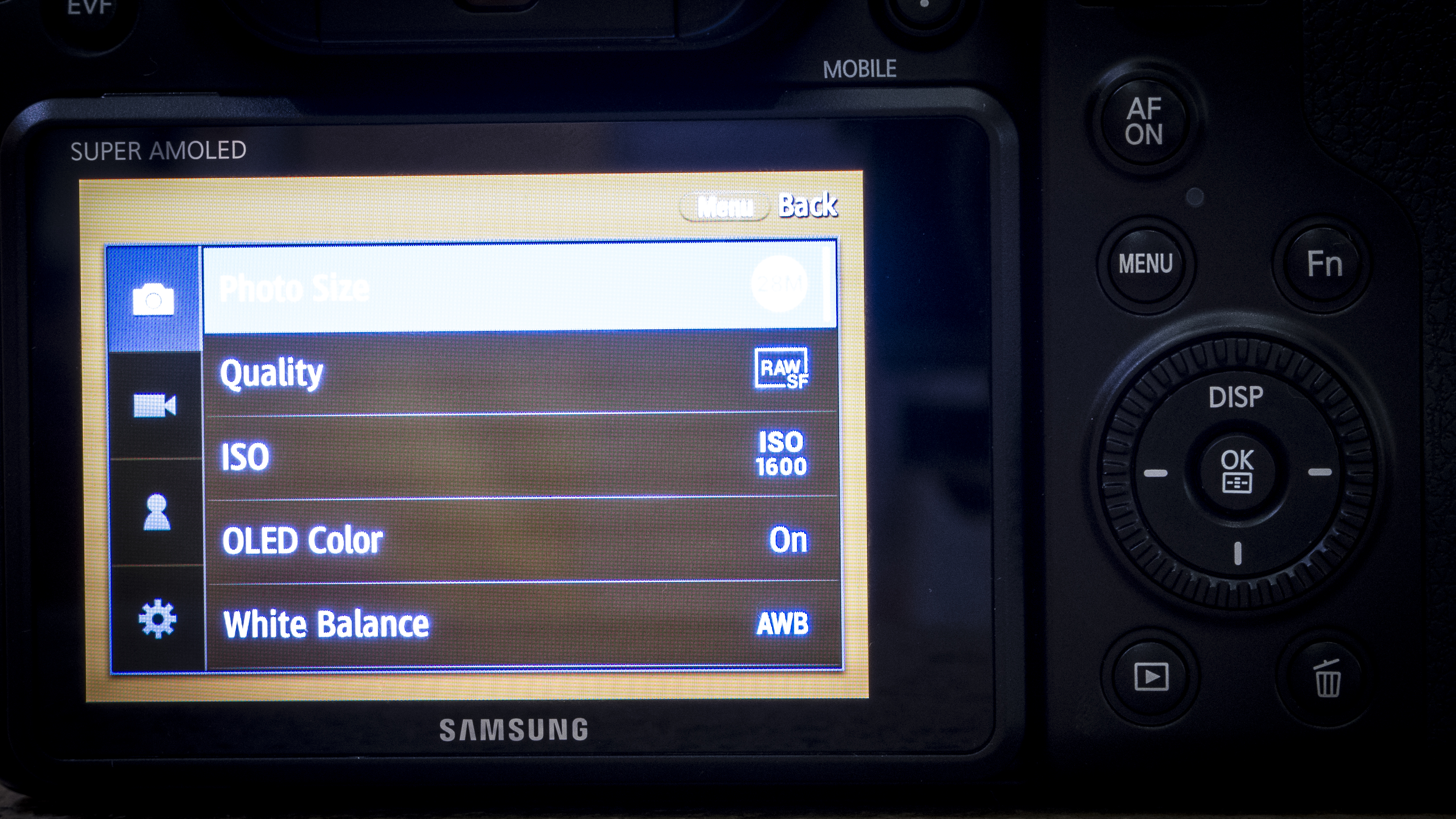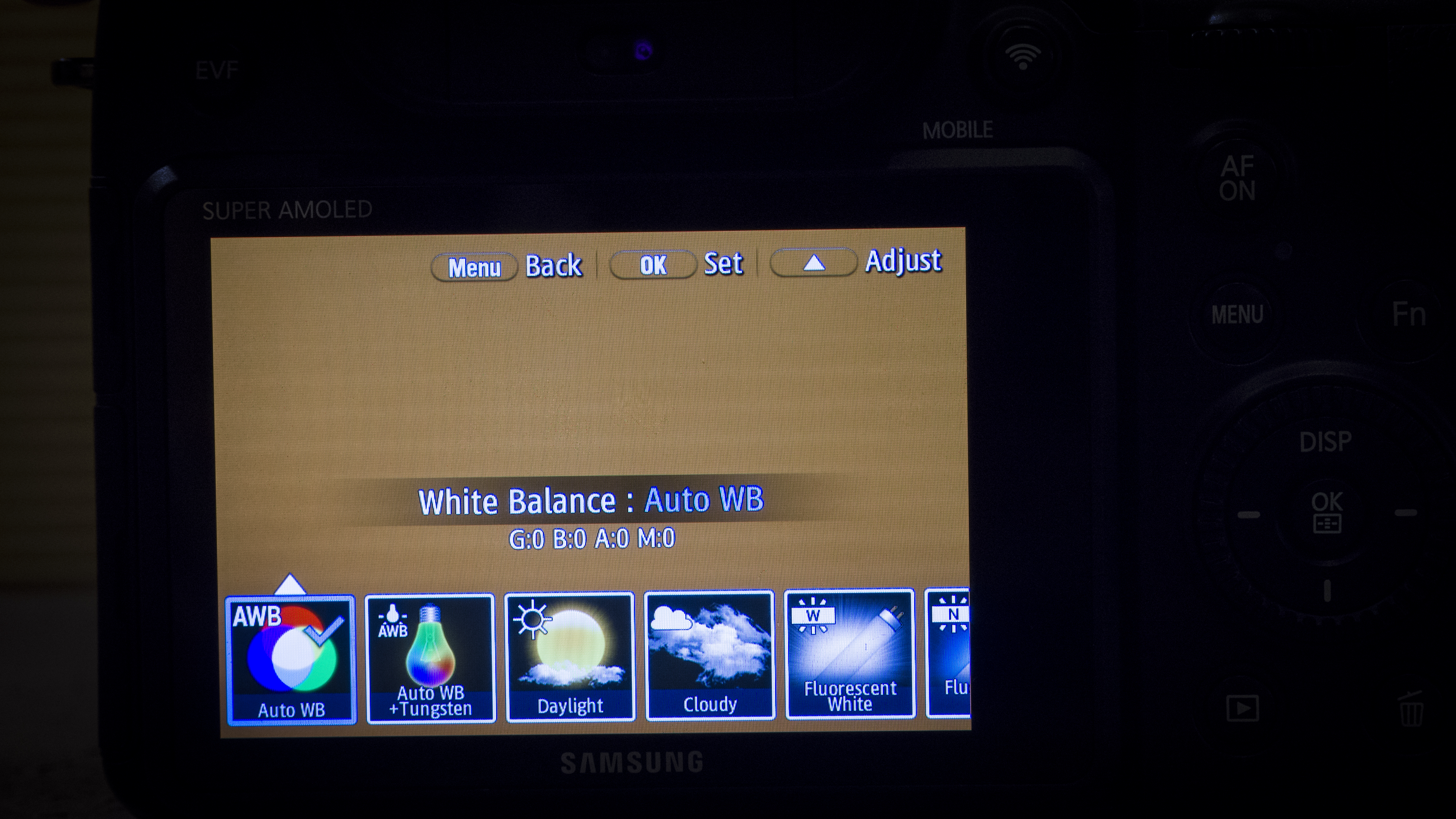Why you can trust TechRadar
Thanks to the class-leading pixel count of 28 million on its APS-C format sensor, the NX1 can resolve more detail than the 16Mp Olympus OM-D E-M1, 20Mp Canon 7D Mark II and the 24Mp Nikon D7100 at most sensitivity settings. What's more, the back-illuminated sensor manages to control noise well.
Images captured at ISO 100-400 have an impressive amount of detail and complex textures are rendered very well. Inspecting images at 100% on-screen reveals that detail levels start to dip at around ISO 800, but the results are still very good and look great at normal printing sizes. Even JPEGs captured at ISO 6400 look good when sized to make A2 prints.

The JPEG results at ISO 12,800 are also pretty good. In the default arrangement, JPEG images captured at this setting have a fine texture of luminance noise visible at 100% and no obvious coloured speckling. Stepping up to ISO 25,600 (the top native setting) sees a significant drop in detail visibility in JPEGs at 100% and colours appear to bleed onto their surroundings. There's also a dip in saturation. At normal viewing sizes, however, the results still look good provided prints are kept closer to A4 than A3 size. As you would expect, the situation is worse at the expansion sensitivity setting (ISO 51,200), which produces JPEG images with very low saturation and lots of luminance noise.
Chroma noise (coloured speckling) makes itself known at 100% in raw files captured at ISO 1600 and above. It becomes problematic in shadow areas at ISO 6400 when you need to take care with processing to find a balance between noise visibility and detail preservation. Nevertheless, I found it produces some excellent results shooting skateboarders in the low light of the Undercroft in London's Southbank.
Popular opinion has it that compact system cameras are unsuitable for shooting sport and action because the autofocus systems are too slow and the lag in their electronic viewfinders makes it hard to follow a moving subject. Recent developments and cameras like the Fuji X-T1, Olympus OM-D E-M1 and Panasonic GH4 are challenging these preconceptions and the NX1 seems to take things a little further – it is certainly capable of shooting sport. Its autofocus system is very good and can even get moving subjects sharp in low light.
Shooting 15fps (frames per second) gives the camera very little time to focus the lens, but the NX1 manages it on many occasions. It doesn't get it right every time with a moving subject, but in normal or 'average' outdoor conditions the hit rate is very high, and it's not too shoddy in low light.
When shooting go karts in a very dimly lit indoor circuit I found that it's not able to match the Canon 5D Mark III for autofocus performance, but it was able to deliver some sharp results. In some cases it latched onto the moving subject quickly and managed to keep it sharp as it sped along the track, but on others it just couldn't get them into sharp register quickly enough. Nevertheless, I am impressed because the lighting conditions were very challenging.
Sign up for breaking news, reviews, opinion, top tech deals, and more.
I found it best to set the AF point myself using Selection AF mode and then move the camera to keep the active point over the subject. Multi AF mode gets it right sometimes, but it doesn't always select the right target and doesn't work well with a moving subject. Similarly, it can be hard to predict whether Tracking AF mode will be able to keep up with the subject.
In very low light (below -4EV) the camera fires out a beam of green light with a cross-hatched pattern to illuminate the subject to help the AF system find its target. It works well when the subject is within range and I was able to get sharp images in the gloomy confines of an awards bash.
As mentioned earlier, the NX1 has 'Baseball' and 'Jump' modes within the Samsung Auto Shot options. Using them is great fun, but we found Baseball mode quite inconsistent. Sometimes it took a shot when the ball wasn't hit, other times it completely failed to take a picture. The height and speed of the ball seemed to have an impact upon whether the shutter was tripped.
Jump mode proved much more predictable and it consistently took photographs of subjects in mid air. It also occasionally took a shot when the subject moved towards the camera to take a look at the picture on the screen.
Both Baseball and Jump mode appear to take more than one picture, but you actually only get one shot from each attempt. This is a shame as facial expressions can vary a lot during this fast moving action and many people would prefer to have a short sequence (shot at 15fps) to choose from.
During our testing the NX1's 221 Block Segment multi-metering system didn't throw up any major surprises. It produced correctly exposed images in many situations and was only fooled into under or over exposure when we might reasonably have expected it to be – when large parts of the scene were very bright or very dark.
Similarly, the automatic white balance system took most natural lighting conditions in its stride and even coped well with some mixed lighting situations. As is often the case, I found it was best to set a custom white balance value in artificial light.

On the whole the camera produces pleasant looking colours with an attractive level of contrast. I especially enjoyed experimenting with the Picture Wizard (photo style) options and creating my own Custom settings (up to three are possible). I found the camera produced some nice results when the saturation was turned down to -5 (the minimum value is -10) and the contrast was set to the +10 maximum. The fact that the Picture Wizards can be used when shooting raw and JPEG files simultaneously makes using them more attractive as you have a raw file with all the colour information to work with post capture. More good news is that Samsung supplies Lightroom 5 on a disk with the NX1 for raw files processing.

I haven't been able to test the NX1's video performance extensively yet, but it's certainly very capable. Movies have lots of detail and smooth movements. Like the stills, the exposure, white balance and colours are also generally very good.
